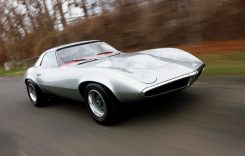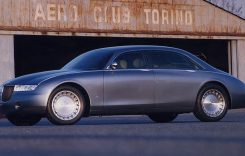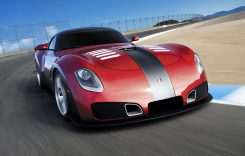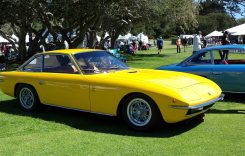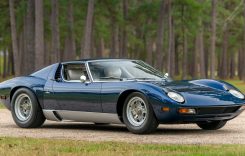For 2012 Yamaha’s YZ250F is all new, sort of. It looks the same, but underneath the bodywork the chassis and engine have been so heavily reworked that for all intents and purposes it should be label as a new machine. After getting trounced in our 2011 250 Motocross Shootout, the tuning fork company needed to do something to get it higher up on the score sheet. Without a doubt efforts have been made, but is it enough to propel the YZ to the front of the pack in 2012? After our first ride at the press intro back in September we left with an impression it would be a contender.

Yamaha’s engineers turned their attention on coaxing more top-end power from the 2012 YZ250F, as last year it signed off too early after a decent mid-range rush. Internal engine changes for the quarter-liter racer concentrated on reducing reciprocating mass and fighting friction. A new, lighter piston design was used that features rings than lower friction that is attached with a lightened wrist pin and circlips. The crankshaft and balancer shaft were reworked to reduce power-robbing vibrations.
The addition of a 39mm Keihin FCR carburetor helped boost the power output of the 2012 Yamaha YZ250F.
Surprisingly, fuel injection is still not a part of the YZ250F playbook, however a 2mm larger, 39mm Keihin FCR carburetor has been fitted to the intake after successful use in the 2011 racing season by Star Racing. At the noisy end of things a new muffler brings the sound down to an AMA legal 94 decibels. Lastly the CDI settings have been tweaked to increase the top-end power.
So did all this work make the YZ250F a ripper? On Two Brothers Racing’s dyno, the Yamaha was in a virtual dead heat with the Honda in the horsepower numbers with 34.45 ponies. Torque numbers were also in the ballpark with the rest of the machines in this test at 18.25 lb-ft of torque on tap at 8200 RPM, which was the lowest max-torque rpm of the group. So it seems the numbers are there to be competitive, but on the track our test riders’ experiences were quite different.
Although the jetting was crisp while on the track, the engine response was always a half-step behind its EFI equipped rivals. While riding you never really missed the lack of fuel injectors – until you jumped onto the other machines.
“The bike ran great and never missed a beat with the carburetor,” said our 2001 WMX champ, Tania Satchwell. “But then I climb aboard the other EFI bikes and I can immediately notice a difference in throttle response.”
During our holeshot and 3rd-gear roll-on testing the lack of fuel injection became more apparent. The YZ250F covers the 120-foot holeshot distance in 4.11 seconds at 36.12 mph, a last place showing. While it got off the line well from a standing start, the roll-on test was an all out ass-kicking for the Yamaha. Rolling on the throttle while lugging along in third gear produced a bog that destroyed the YZ’s 15-40 mph time, covering 138.1 feet in 3.21 seconds. That’s 17 feet more than the best performer and
All of our testers commented on how stable the 2012 Yamaha YZ250F was at speed and in the air.
fifth of a second slower. Granted in real life, you wouldn’t be lugging the motor and if you did you would fan the clutch to avoid the engine hiccup, but we have to keep all testing protocol equal for consistency’s sake.
On the track the power is significantly better than last year throughout the rev range, but it still signs off sooner than others in this test. The more aggressive the rider, the bigger the disparity was between the Yamaha and the best powerplants in the class.
“The Yamaha’s power was just ok,” complained our pro-level ripper Nick Thiel. “It has a good mid-range but signs of way too soon on top. This might be too blunt, but they seriously need to go back to the drawing board on this motor.”
The rest of the crew’s comments weren’t as harsh, but we all agreed that the YZ needs more juice to hang with the monster motors of the Kawasaki and Suzuki. In a class where power is a huge factor for success, the YZ250F ends near the bottom of the pile.
Handling on the revised YZ is improved from the previous year. A new swingarm, totally reworked frame and new triple clamps make the handling of the bike more consistent. The buzz word for the 2012 model was the same as the KTM – stable. The Yamaha was one of the best jumpers in the test, with a very balanced feel on jump faces and landings. In the air you could feel that the bike was the lightest at 230 pounds. Where it faltered was inside lines, just like the 250 SX-F. Sticking a tight rut was easier than the orange bike but still more difficult than the others. In faster sections the blue bomber was one of the most comfortable and confidence inspiring.
The small cockpit and light weight .of the 2012 Yamaha YZ250F made throwing the bike around easy.
The ergonomics drew mixed reactions from our staff. The low cockpit instantly clicked with some and took time to get used to for others. Smaller riders like Armstrong had no problem with the layout where I had to push the bars as far forward as possible and was still left wanting a taller bar. With the lowest price of $7290, there is plenty left in the till to dial in the controls to your liking.
“The Yamaha has a nice slim profile to it; the seat and cockpit are a little small,” commented Armstrong. “But it fits me well being a smaller guy. Also the bike felt light and easy to flick around.”
When the scores are tallied, the Yamaha finishes one place higher than the previous year in fourth place. Not exactly where the all the hard work and changes to the 2012 YZ250F should have left it, but in a contest as fierce as this even the slightest imperfections can be enough to slip off of the podium. The lack of fuel injection ended up being the Achilles heel of the Yamaha, but in reality it works well unless put under extreme scrutiny. Hopefully in the near future Yamaha will outfit its Lites bike with EFI, when that happens watch out.
